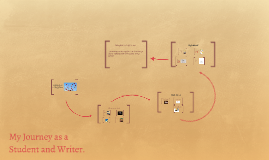

Using the basic cues, both eyes form slightly different images of the same object (in terms of viewing angle and relative size) which are combined in the brain for correct estimation of the distance. This requires the combined role of both eyes to provide a basis for the correct estimation of the distance of an object. However, each eye may not independently provide the correct estimation of the distance of an object. It shows that depth perception is present in individuals from a very early age, though this perception power strengthens with experience over the course of life.ĭepth perception is a product of three components 1) each eye plays a separate role in perception, 2) both eyes play a combined role in the depth perception, and 3) the brain process the cues (signals) received from both eyes and turn them into a three-dimensional image.Įach of both eyes provides certain cues (signals) for depth perception which are primary in sensing out an external object. Because of this, many of these cues are used in art to. What is the difference between binocular and monocular cues to depth Unlike binocular cues, which involve the use of both eyes, monocular cues only require the use of one eye and can be presented in two dimensions. The infant plays in the mid area of the surface of the table but avoids crawling near the edge of the surface of the table. Binocular Cues vs Monocular Cues-Definition, Difference and Uses. For instance, psychologists may assess the depth perception of an infant by putting the infant on a table. Sources of information for the detection of depth can be grouped into two categories: monocular cues (cues available from the input of just one eye) and. When viewing things close up, yes, binos will have an advantage, but why are you looking through binos when its close to you Anything farther away than 30m then you start using monocular cues to judge distance. Likewise, while driving, we adjust the speed of our car according to our distance from other cars being driven on the same road.ĭepth perception is a natural ability that is present in people generally at all ages.

Similarly, while walking, we sense out the distance of the ground and if we see a ditch on the ground, we may stop or change our direction because we sense depth (greater distance from the surface of the ground) of a ditch and thus it saves us from falling into the ditch. For instance, while walking on the beach, we may stop or change our direction when we sense that we reach the edge of the beach. Thus, it keeps us safe from many dangers. It is important because it helps us make an accurate judgement of the distance of things from us which helps us adjust our movement accordingly while walking or driving. These slightly different images are processed by the brain to form a three-dimensional image and to gauge the accurate distance of the object from the observer.īefore explaining the depth perception process in detail, let’s briefly understand why depth perception is important. When we see the external objects, each of our eyes makes a slightly different image of the object (e.g., in terms of viewing angle or relative size). It is our optical ability to perceive the world in three dimensions that enables us to determine the accurate distance of an object from us.


 0 kommentar(er)
0 kommentar(er)
